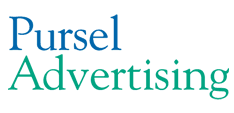Traditional Advertising Isn't Dead ... Yet

Or IS IT? This is an interesting article, with an even better follow up from Ed Papazian from Media Dynamics Inc. Ed has been in this biz for decades, and now has a company that compares traditional and digital research to determine the best avenue for his clients to invest. And FYI, Ed is very bullish on digital. So take a moment and have a good read. Don’t miss Ed’s comments at the end either. LMK what your thoughts are. Mike.
by Monique Serbu, Op-Ed Contributor, November 10, 2017
Although new avenues for both media and marketing are growing at a rapid pace, traditional media is still going strong. And that means — contrary to popular opinion — traditional advertising methods are still kicking too.
Digital marketing certainly has its strengths, like its scalability and cost-effectiveness, but data shows people are growing increasingly dissatisfied with the marketing tactics being used these days. In fact, 81% of consumers say they’ve closed a browser or webpage because of a pop-up ad. Digital ads in general may be more tolerated than appreciated these days.
So where do you turn for effective marketing that doesn’t annoy your customers? The channels that have been there all along. If you’ve been ignoring traditional advertising, you’ve been making a mistake. Read on to learn why.
People Are Still Exposed to Traditional Ads
Traditional print and TV ads still have plenty of reach. Despite the increasing number of cord cutters, plenty of folks still watch regular old TV — almost five hours a day, in fact. While that number is lower than it was a few years ago, it is still incredibly high. We’re talking over thirty hours a week, and this is just through one medium.
DISH, one of the top satellite TV providers, boasts over 13 million customers. That’s a lot of eyeballs consuming video content through TV alone. Sure, people may record the shows and fast-forward through the commercials, but that’s no different than them clicking out of your pop-up ad online. But if they watch live TV, they’re still exposed to traditional ads. The situation with radio is similar — trending downward but still very much present and accounted for.
Traditional Ads Are Surprisingly Effective
A recent study by MarketingSherpa found that the top five most trusted ad formats are all what we would consider traditional: print, television, direct mail, radio, and out-of-home advertising. The survey also found that traditional ads have a very high engagement level, with over half of respondents saying they tend to watch TV ads from companies they like. Similar numbers were also reported for direct mail and in-store print ads.
The digital side of things didn’t fare as well — only email had engagement levels rivaling the traditional formats. And in another survey from HubSpot, several types of common online ads were called out as being overly intrusive and disliked by respondents, including pre-roll ads (the ones that play before videos), pop-up ads on web pages, and mobile phone ads.
A Holistic Approach to Marketing May Be Best
As with most things, a balanced, holistic approach to marketing is probably the smartest way to go for most brands. Digital advertising certainly has its appeal after all. It is more cost-effective and can target specific consumers more easily, which is powerful. Additionally, digital ads can grant access to data and insights in real time, allowing you to fine-tune your campaign quickly and easily.
An approach that combines digital and traditional advertising into a cohesive, well-thought-out campaign is likely to be most effective.
The Ad Industry Still Has Work to Do
It isn’t just traditional advertising that people are claiming is dead. The reality is that the entire industry is in kind of a rough spot right now. Poor quality hurts ad results in both traditional and digital formats, and consumers now have the ability to simply ignore huge chunks of that poor advertising by using ad blockers.
Companies need to get back to the basics, focusing on quality content that tells a compelling story and maintains brand consistency. And this change needs to happen both in the digital world and in the traditional print and TV world.
Ed Papazian from Media Dynamics Inc, November 10, 2017 at 10:18 a.m.
Monique, I tend to agree with you on your basic premise. Most of the research indicates that putting too much of you ad budget into a single medium---like 75-85% going to TV---- leads to redundancy and campaign wearout. Hence a more balanced media mix is usually a good solution because saying the same thing in many different ways and contexts, in theory, generates a better sales result. Of course, a media mix should consider digital media, but I must also point out that it's well past time for digital ad sellers to reformat their operations so they are both ad-friendly and user friendly. This goes to the point of ad viewability, how ads are scheduled and also, the cost of buying and servicing digital ad campaigns. A traditional advertiser pays between 1-3% of the media spend to have the buys made, trafficked and serviced---a digital buy often gobbles up 35% or more of the ad budget just to be executed. This is a preposterous differential that must be considered when digital is evaluated as part of a media mix. Your typical TV-style branding advertiser does not buy banner ads on digital platforms, but wants to present TV commercials, albeit in a shorter length---to targeted consumers in content that engages the audience. When the CPMs as well as the buying costs for such buys are considered, digital is no bargain---and, often, is poorly priced compared to what can be had in traditional media. To be competitive and to earn its proper share of ad budgets, digital ad sellers must start to deal with the issues I am raising and stop waiting for TV to die. It may be a long, long wait.




















